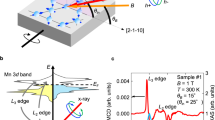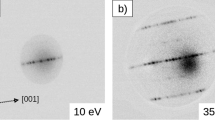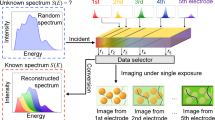Abstract
ABOUT this time last year, at the suggestion of Prof. A. W. Stewart, I began some work to test whether or not the molecules of a substance (more particularly at first of a liquid) underwent an orientation when placed in a magnetic field. So far the results all seem to indicate that something of the kind does take place. The method first adopted was analogous to Laue's method of diffracting X-rays. A parallel pencil of X-rays was directed through a small cell containing barium iodide placed between the poles of a large electro-magnet, and was then received on a photographic plate. During the first complete exposure no current was run through, during the next current was run through, and the process was repeated with a second pair of plates. In the case of both pairs of plates it was found that the disc which came up dark on development was greater in diameter for the exposure during which the magnet had been excited than for that when it had not been excited. The increase was more than ten per cent. of the original diameter. This effect may be analogous to that observed when a pencil of X-rays is passed through a powdered crystal. So far this method has not been used in a very refined manner, but it is hoped to continue with it and to improve it. The results obtained by it, however, have been corroborated by entirely independent methods, in which the properties of X-rays were not made use of.
This is a preview of subscription content, access via your institution
Access options
Subscribe to this journal
Receive 51 print issues and online access
$199.00 per year
only $3.90 per issue
Buy this article
- Purchase on SpringerLink
- Instant access to full article PDF
Prices may be subject to local taxes which are calculated during checkout
Similar content being viewed by others
Author information
Authors and Affiliations
Rights and permissions
About this article
Cite this article
HOLMES, M. Orientation of Molecules in a Magnetic Field. Nature 110, 635 (1922). https://doi.org/10.1038/110635d0
Issue date:
DOI: https://doi.org/10.1038/110635d0



